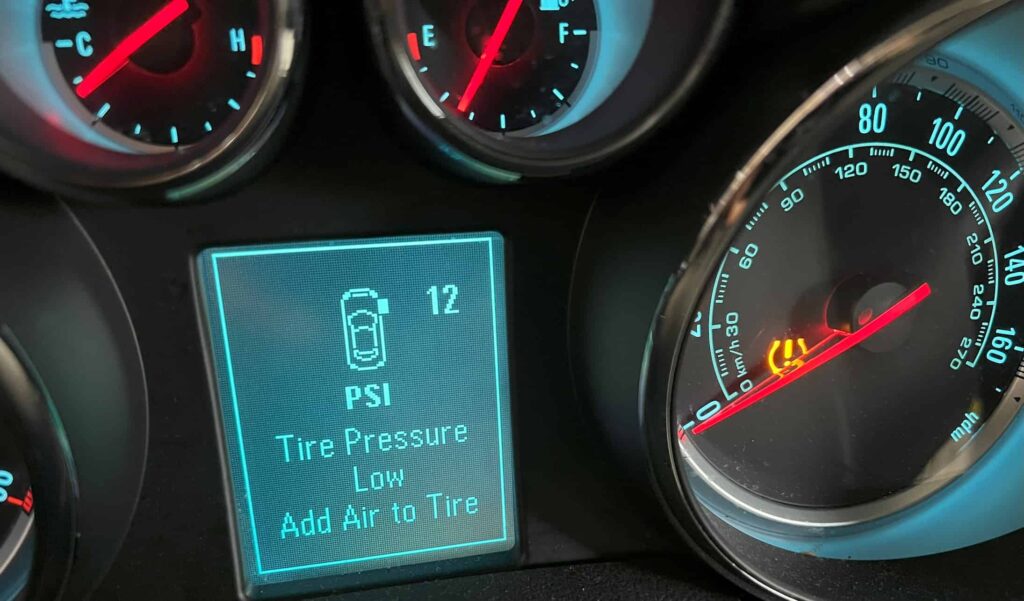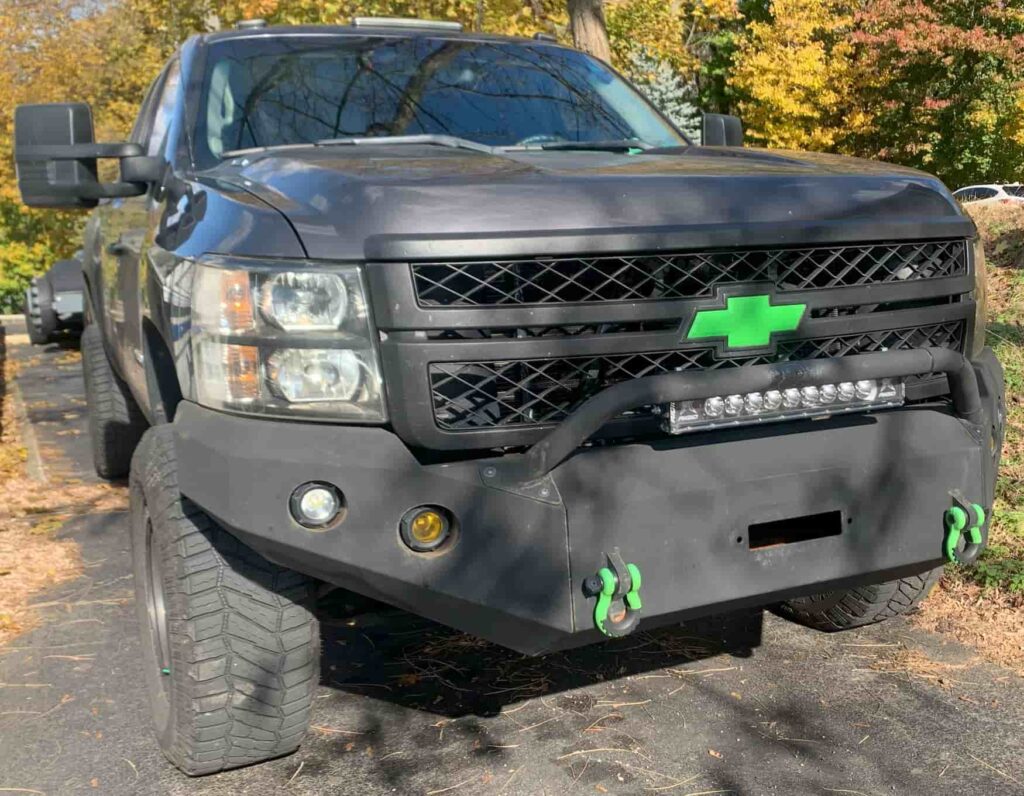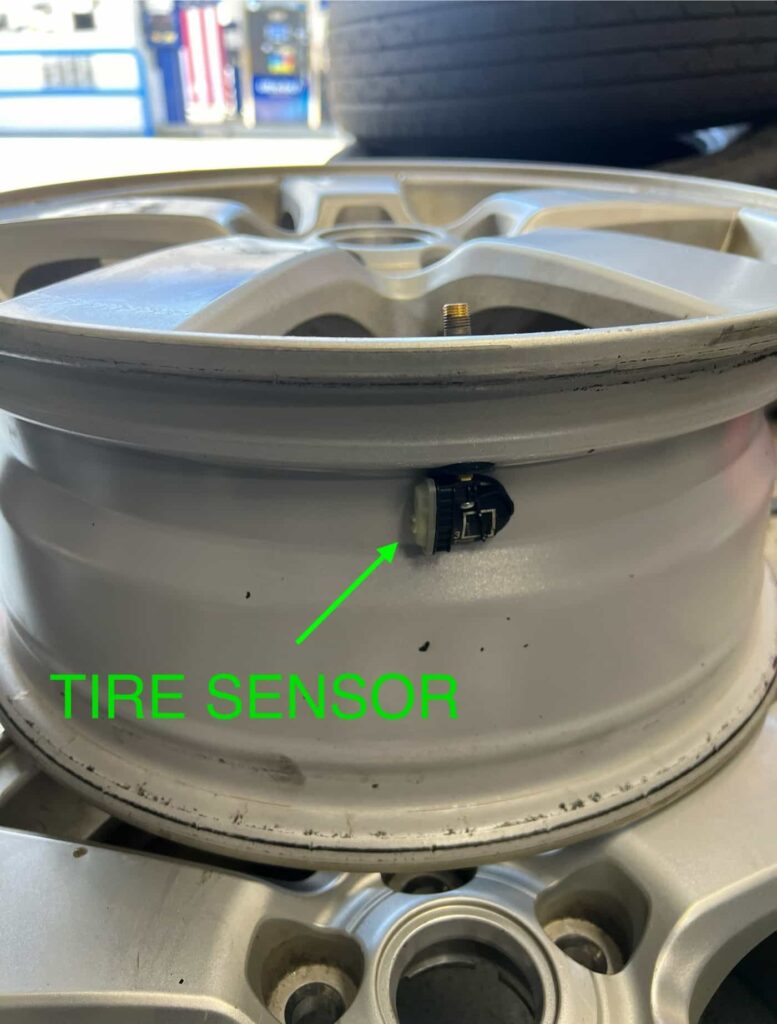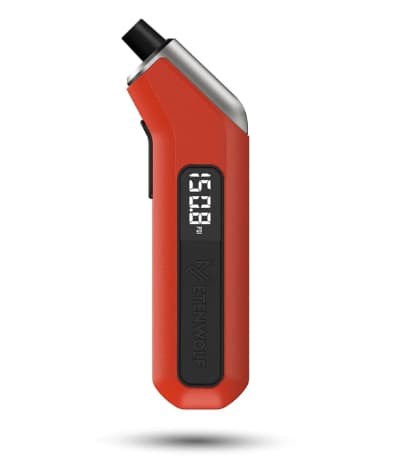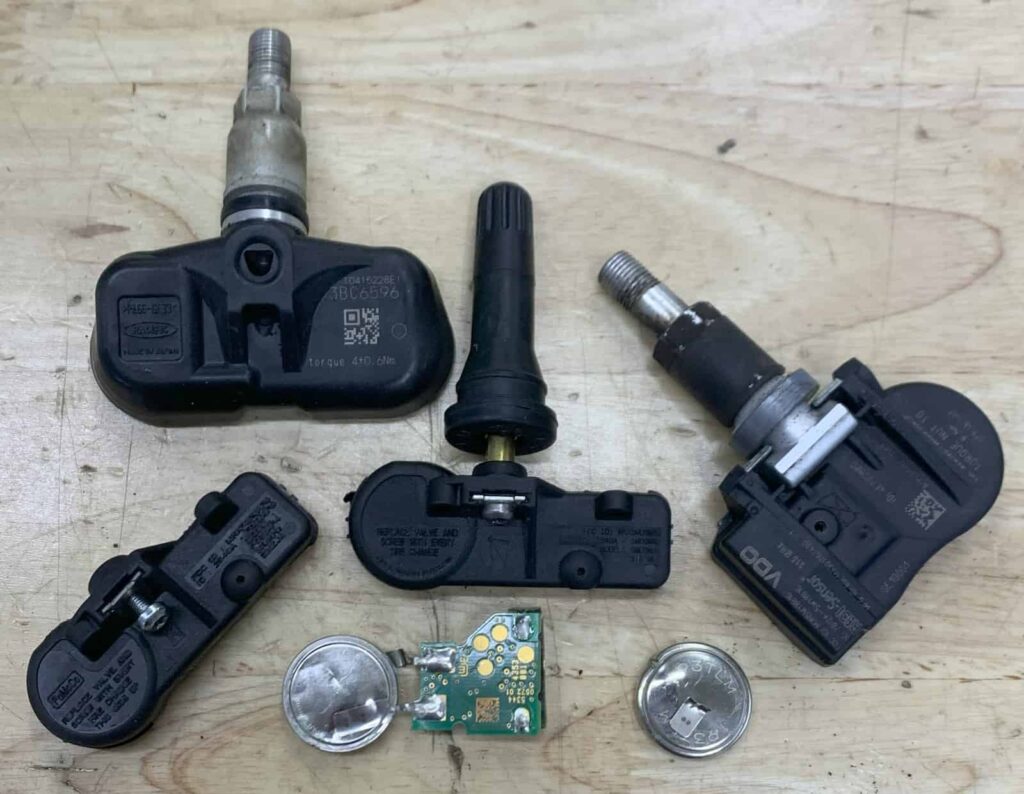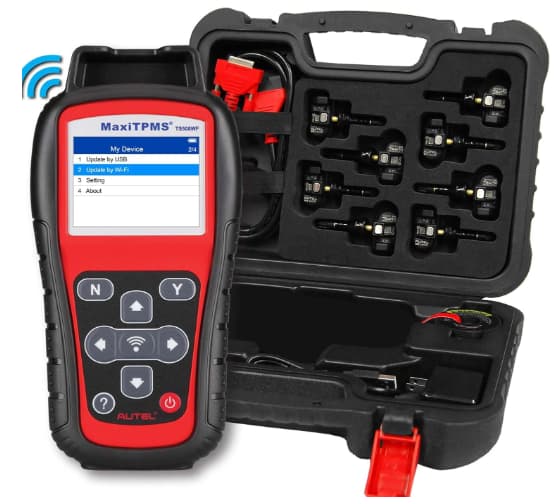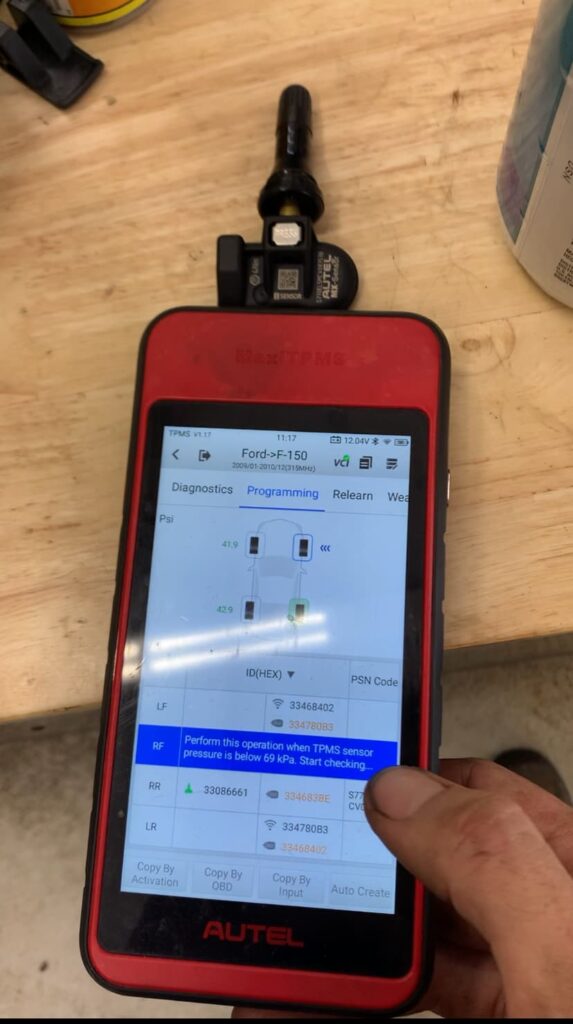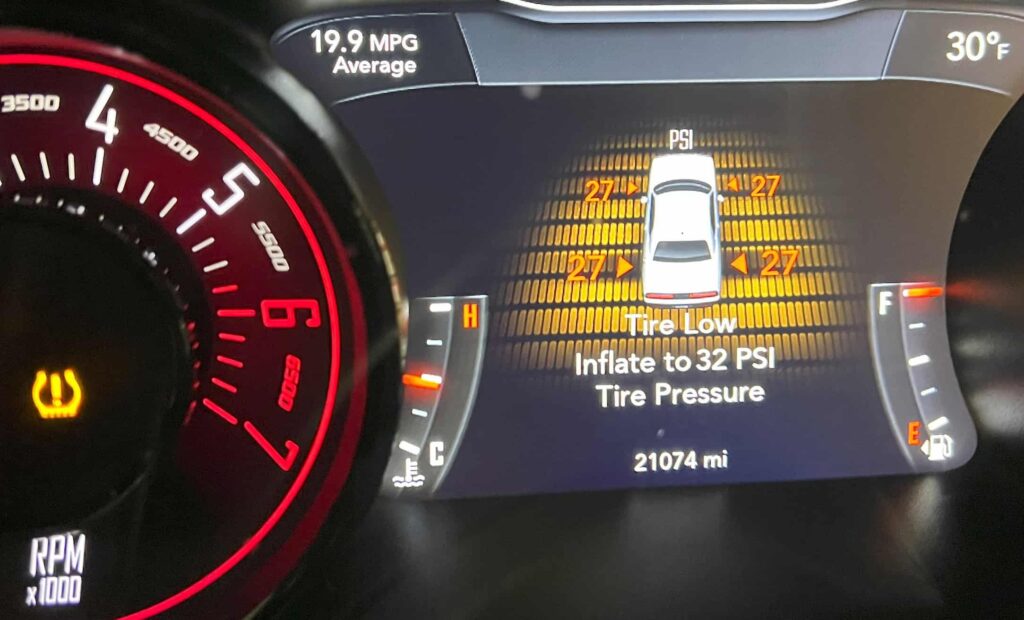Chevy Service Tire Monitor System Light Explained
The Chevy Service Tire Monitor System light is a warning indicator on the vehicle’s dash that alerts the driver to potential discrepancies in tire pressure among the tires. This light can indicate that one or more tires are significantly under-inflated, leading to decreased fuel efficiency and tire life, as well as increased risk of flat tires and accidents.
How Do I Reset the GM Service Tire Monitor System?
GM vehicles do not have a TPMS reset button.
Wait 3 hours after last driving for the tires to be in a cold state.
Set the air pressure of all four tires according to the air pressure information on the driver side door’s tire sticker.
Drive your GM vehicle at speeds above 25 Mph for 15 minutes.
How to Relearn Tire Positions of GM Tire Pressure Monitor System
When a GM vehicle undergoes tire services or tire pressure sensor changes, apply the following tire pressure sensor relearn procedure. This confirms the BCM/ECU awareness of each tire’s current location.
Pump all tires to approximately 40 Psi.
Turn your GM vehicle Ignition ON while leaving the engine Off.
Select the Menu Tab on the information display.
Choose “Vehicle Information.”
Choose the “Tire Pressure Menu.”
Hold the SET/CLR button.
The vehicles information display screen will show the following message “Are you sure you want to relearn?”
Select “Yes.”
Two horn beeps confirm and “TIRE LEARNING ACTIVE” will be seen on the screen.
Go to the left front tire (driver side front tire), and deflate the air pressure until you hear the horn beep.
Sequentially, do the same for front right, rear right, and rear left tires in that order.
The on-screen “tire learning active” message vanishes upon successful completion.
Turn off the ignition and readjust all tire pressures back to your GM vehicles recommended air pressure levels.
IMPORTANT NOTE: Depending on the year of your GM vehicle, a TPMS relearn tool may be required. Only follow the tire pressure sensor relearn process in order above. (LF, RF, RR, RL)
How Do GM Tire Pressure Monitoring System Work?
Components of the TPMS
Tire Pressure Sensors: Each tire (including the spare if its a full size tire, in some models) is equipped with a TPMS sensor located inside the tire, attached to the rim or at the base of the valve stem. These sensors are battery-operated and measure the air pressure and temperature inside each tire. The standard frequency for GM tire sensors is 315 MHz.
Onboard Computer (Receiver): The vehicle’s onboard computer functions as the receiver for signals transmitted by each tire pressure sensor. This computer is often part of the vehicle’s overall diagnostic system, which includes the Driver Information Center (DIC).
How it Works
Monitoring Pressure: Each TPMS sensor continuously monitors the pressure inside its respective tire, converting this physical property into an electrical signal, which is then transmitted to the vehicle’s onboard computer system.
Signal Transmission: The sensors transmit their data at regular intervals and whenever a significant change in pressure is detected. Transmission is also triggered by motion (to save battery power), so tire pressure sensors will update the onboard computer shortly after the vehicle begins moving.
Data Analysis: The onboard computer receives data from each sensor and analyzes it against pre-set thresholds of acceptable tire pressure levels. The thresholds are set by GM and can be found on the tire placard. (Note: Only use the air pressure values listed on the sticker inside the driver door panel; avoid using tire pressure levels or recommendations from the tire sidewall or any other sources.)
Alerting the Driver: If the pressure in any tire falls below or rises above the set thresholds, the system triggers an alert to the driver through the dashboard display, typically illuminating a warning light (often an exclamation mark within a tire cross-section symbol) and potentially displaying a message in the DIC.
What Sets Off the GM Low Tire Pressure Light?
Underinflation: The most common cause, where one or more tires are below the recommended pressure levels as specified on the door panel sticker.
Overinflation: Tire pressure significantly higher than recommended can also trigger the warning light.
Temperature Changes: Significant drops in temperature can cause air in the tires to contract, resulting in a low tire pressure light.
Leakage: Small punctures or cuts in the tire that cause air to leak slowly will lower the tire pressure.
Faulty TPMS Sensor: A malfunctioning or damaged tire pressure sensor can result in a TPMS light.
Battery Failure in Sensor: Sensors have batteries that deplete over time, leading to false readings or failure to transmit data.
Recent Tire Service: Incomplete TPMS resets or re-calibration after tire rotation or replacement can result in the tire light turning on.
System Error: General malfunctions in the TPMS system’s electronic components or programming may activate the warning light.
Each of these issues requires different interventions, from simple tire inflation to component replacement or TPMS system diagnostics.
What Else Can I Do To Turn Off the Tire Light if Nothing Else Works?
If you are having issues resetting or turning off your GM TPMS warning light, here are a few tips:
Disconnect the battery terminal: Disconnecting your negative battery terminal will reset and delete temporary error codes in your Gm’s on board computer system. Wait a few seconds after disconnecting the battery before reconnecting the terminals and the TPMS light will turn off.
Release Air Pressure from tires: Release about 10 psi from each tire and then re-inflate each tire back to the recommended air pressures. Drive your GM vehicle afterwards and then follow the TPMS relearn procedure again.
TPMS Diagnostic Tool: Use a special TPMS tool to scan and diagnose each tire pressure sensor to determine each sensor’s health.
Check For Leaks: If the tire pressure loses any amount of air pressure after inflating the tires, you likely have a leak. Use the soap and water method to find the exact location of your leaking tire.
The Purpose of the Chevy "Service Tire Monitor System" Warning Light
The purpose of the Chevy “Service Tire Monitor System” warning light is to alert the driver about possible issues with the tire pressures or TPMS sensors. This warning helps in maintaining proper tire pressure, which ensures optimal tire performance, safety, and fuel efficiency.
What Brand TPMS Does GM Use?
GM vehicles typically use GM branded or AC Delco tire pressure sensors that operate on a 315 MHz frequency. These sensors are designed to be compatible with Chevy’s specific monitoring systems and are calibrated to operate correctly with the factory-installed tire pressure monitoring systems.
How Long Do GM Tire Pressure Sensors Last?
Each Gm tire pressure sensor can last up to 10 years or 100,000 miles.
Are All GM TPMS Sensors the Same?
No, all GM TPMS sensors are not the same. Different models and tiers might use different sensors, although many are standardized across several model years and types. Some may require specific tools to program or relearn their positions after installation or tire rotation.
Do New GM TPMS Sensors Need to be Programmed?
Yes, GM TPMS sensors need to be programmed to the vehicle’s TPMS system via a sensor matching process using an OBDII connector tool or a special relearn procedure. This ensures the vehicle correctly identifies the sensor’s location on the car and monitors the tire pressure accurately.
How Do I Tell Which Tire Pressure Sensors is Bad?
To determine which tire pressure sensor is bad:
Check the tire pressure in all tires with a manual pressure gauge.
Compare the manual readings to the TPMS readings shown on the vehicle’s display.
Any sensor that significantly deviates from the manual readings may be faulty or require re-calibration.
What Happens if a Tire Pressure Sensors Goes Bad?
If a tire pressure sensor goes bad, it may fail to report the correct pressure of its respective tire, leading to potential safety risks like improper tire inflation. This can cause poor vehicle handling, increased tire wear, and can potentially lead to tire failure.
What are the Symptoms of a Bad Tire Pressure Sensor?
Symptoms of a bad tire pressure sensor include the TPMS warning light staying on, fluctuating tire pressure readings on the dash display, or no updates at all from the sensor. Additionally, you might receive a direct warning on the vehicle’s uplevel DIC if equipped.
Where is the Reset Button on the Chevy Tire Pressure Systems?
GM vehicles do not have a typical TPMS reset button.
How Much Does it Cost to Fix a Tire Pressure Sensor?
Tire pressure sensors cost between $30-$75 and about $50-$100 to be installed. TPMS sensors have to be removed and replaced from the tire, the tire has to be rebalanced, and then the sensor has to be programmed to the vehicles on board computer system with a special TPMS tool.
Can I Disable My Vehicle TPMS?
Removing your vehicle’s tire pressure sensors will result in a TPMS malfunction. This will cause the tire pressure light to flash on the dashboard and then stay on until the sensors are reinstalled.
Why is the Low Tire Pressure Light Flashing?
If your tire pressure light is flashing this indicates a TPMS malfunction. This occurs when one or more tire pressure sensors are not properly communicating with the vehicles on board computer system. To determine which tire pressure sensor is faulty, use a TPMS diagnostic tool to scan each TPMS sensor for a report on its health and battery status.
Can I Still Drive with the Service Tire Monitor System on the Dash?
Driving with a tire warning light is possible but not advisable as it signals potential tire pressure issues that could affect vehicle performance and safety. Determine the cause of the tire light before driving long distances.
Is it Safe to Drive with a Service Tire Monitor Light On?
It is generally safe for short distances as long as your tire pressures are at the correct levels. Address the issue as soon as possible to ensure long-term safety and tire integrity.
What Does the Chevy "Service Tire Monitor System" Warning Mean?
This warning means there is a discrepancy in the tire pressure readings, requiring immediate attention to ensure safety and maintain efficient vehicle performance.
How Do I Service My Tire Monitor System?
Servicing your tire monitor system involves checking and adjusting all tire pressures, replacing any defective TPMS sensors, and resetting the system through the vehicle’s DIC. Use a TPMS Diagnostic tool to find the current status of each tire pressure sensor.
GM & Chevy Vehicles
Follow these detailed GM & Chevrolet TPMS Reset articles for each Model: Chevy Cruze, Chevy Corvette, Chevy Camaro, Chevy Silverado, Chevy Suburban, Chevy Colorado, Chevy Tahoe, Chevy Bolt EV, Chevy Malibu, Chevy Traverse
Please note that this blog post contains Amazon affiliate links. This means that if you make a purchase through one of these links, we at TPMSRESET.COM may earn a small commission at no extra cost to you. We only recommend products that we personally use and believe in. Thank you for supporting us.
About the Author
Stefan A. – Professional Automotive Technician – I am currently an automotive technician in New Jersey and have worked in private shops as well as dealerships. When I am not writing articles I am wrenching on race cars and driving radio controlled cars at the track!

